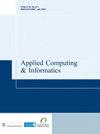基于特征选择的早期糖尿病可能性预测分类模型
IF 4.9
Q1 COMPUTER SCIENCE, INFORMATION SYSTEMS
引用次数: 4
摘要
糖尿病是一种危及生命的慢性疾病,根据世界卫生组织的报告,截至2018年,全球已有4.22亿人受到糖尿病的影响。这让个人、政府和团体付出了巨大的代价;从诊断阶段到治疗阶段。这一费用的原因之一是,这是一种需要长期治疗的疾病。这种疾病可能会继续影响更多的人,因为它的渐近期很长,这使得它的早期发现是不可行的。在这项研究中,作者提出了具有特征选择的机器学习模型,可以在早期发现糖尿病疾病。此外,所介绍的模型并不昂贵,并且每个人都可以使用,包括偏远地区的人。研究结果表明,特征选择有助于获得更好的模型,因为它可以防止过拟合并去除冗余数据。因此,研究结果与以往的研究结果相比,在对F-measure、Precision-Recall曲线、Receiver Operating Characteristic Area Under curve等指标进行评价后,取得了较好的结果。这一发现有可能对临床实践产生影响,因为卫生工作者的目标是在早期阶段诊断糖尿病。原创性/价值这项研究尚未在其他地方发表。本文章由计算机程序翻译,如有差异,请以英文原文为准。
Classification models for likelihood prediction of diabetes at early stage using feature selection
PurposeDiabetes is one of the life-threatening chronic diseases, which is already affecting 422m people globally based on (World Health Organization) WHO report as at 2018. This costs individuals, government and groups a whole lot; right from its diagnosis stage to the treatment stage. The reason for this cost, among others, is that it is a long-term treatment disease. This disease is likely to continue to affect more people because of its long asymptotic phase, which makes its early detection not feasible.Design/methodology/approachIn this study, the authors have presented machine learning models with feature selection, which can detect diabetes disease at its early stage. Also, the models presented are not costly and available to everyone, including those in the remote areas.FindingsThe study result shows that feature selection helps in getting better model, as it prevents overfitting and removes redundant data. Hence, the study result when compared with previous research shows the better result has been achieved, after it was evaluated based on metrics such as F-measure, Precision-Recall curve and Receiver Operating Characteristic Area Under Curve. This discovery has the potential to impact on clinical practice, when health workers aim at diagnosing diabetes disease at its early stage.Originality/valueThis study has not been published anywhere else.
求助全文
通过发布文献求助,成功后即可免费获取论文全文。
去求助
来源期刊

Applied Computing and Informatics
Computer Science-Information Systems
CiteScore
12.20
自引率
0.00%
发文量
0
审稿时长
39 weeks
期刊介绍:
Applied Computing and Informatics aims to be timely in disseminating leading-edge knowledge to researchers, practitioners and academics whose interest is in the latest developments in applied computing and information systems concepts, strategies, practices, tools and technologies. In particular, the journal encourages research studies that have significant contributions to make to the continuous development and improvement of IT practices in the Kingdom of Saudi Arabia and other countries. By doing so, the journal attempts to bridge the gap between the academic and industrial community, and therefore, welcomes theoretically grounded, methodologically sound research studies that address various IT-related problems and innovations of an applied nature. The journal will serve as a forum for practitioners, researchers, managers and IT policy makers to share their knowledge and experience in the design, development, implementation, management and evaluation of various IT applications. Contributions may deal with, but are not limited to: • Internet and E-Commerce Architecture, Infrastructure, Models, Deployment Strategies and Methodologies. • E-Business and E-Government Adoption. • Mobile Commerce and their Applications. • Applied Telecommunication Networks. • Software Engineering Approaches, Methodologies, Techniques, and Tools. • Applied Data Mining and Warehousing. • Information Strategic Planning and Recourse Management. • Applied Wireless Computing. • Enterprise Resource Planning Systems. • IT Education. • Societal, Cultural, and Ethical Issues of IT. • Policy, Legal and Global Issues of IT. • Enterprise Database Technology.
 求助内容:
求助内容: 应助结果提醒方式:
应助结果提醒方式:


